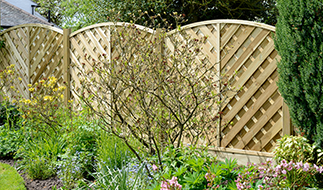Does a Wooden Pergola Need to be Anchored?
- Gates
- Railings
- Fencing
- Accessories
& Fitting- Sheds
& Storage- Garden Structures
- Design
& StyleMetal Gates & Railings- Info
& Help2024-10-11
There are many ways through which you can improve the aesthetics and functionality of your garden, and nothing can compare to the beauty of a wooden pergola. These beautiful structures do not only become the center of attention in your outdoor area, but also are perfect for the growing of climbing plants and a place to hide from the sun. However, as you plan your pergola project, you might find yourself pondering a crucial question: does a wooden pergola have to be bolted down or built into the ground?
The answer is yes, but let’s look at the reasons behind that and learn how to make your pergola strong and stable for a long time.

Why anchoring matters
Safety first
First and the most important of all, the issue of the stability of your pergola comes to play when you must anchor it. Wooden pergolas may seem very robust but if they are left without any support, they become dangerous structures. This is especially true in the UK where the weather can be quite chaotic; an unanchored pergola can become a flying object that can cause harm to your property or people.
Stability and longevity
Aside from issues of safety, anchoring your pergola is a good way of increasing the stability of the structure and its longevity. This means that your structure will not twist, topple or shift in the future, thus you will be able to use your will-built pergola as an elegant addition to your garden for many years.
Building regulations
It is also important to mention that in some places it is necessary to properly secure the structure of a pergola according to the local building codes. However, it is advisable to consult your local council to confirm the requirements that must be followed when constructing a pergola.
Methods of anchoring
Now that we've established the importance of anchoring, let's explore some effective methods to secure your wooden pergola:
Concrete footings
There is no doubt that amongst the most reliable ways of supporting your structure - concrete footings are a great option for your pergola posts. This technique is very effective when it comes to stability and particularly when dealing with larger structures. To implement this:
1. Make the holes for each post and make sure that the holes are deep enough to avoid the frost line which is 60-90cm in the UK.
2. Now put your posts in the holes and then the concrete will be poured around the posts.
3. To ensure the posts don’t wobble as the concrete dries you need to use temporary braces to hold them in place.
Post brackets
If you want a more temporary solution with still great stability, turn to post brackets. These metal brackets are screwed into the concrete base and enable the installation of the pergola posts without the need of installing them in concrete. This method has the benefit of being easily replaceable or removable in case one wishes to do so in the future.
Ground screws
The next generation of foundation solutions, ground screws are a fast and sustainable solution to concrete. These are big, screw type anchors which are inserted into the ground with the help of special tools to support your pergola posts. They are especially effective in areas with a high-water table or where there is little or no disruption of ground, which is desirable.
Deck mounting
If your structure is to be constructed on an existing deck, then it will be possible to use deck mounts to fasten the posts. These brackets are screwed into the deck frame itself meaning the structure of the pergola is firmly attached to the deck.
Choosing the right method
The best anchoring method for your pergola will depend on several factors -
Soil type: Soil conditions may call for the use of other methods when putting up structures on different types of soil. Hard or rocky soil may perhaps require deepening of footings while soft or sandy soil may necessitate the use of ground screws.
Pergola size: Larger pergolas may need much more durable fastening to the ground or the structure it is attached to. A small, free-standing structure may be anchored adequately by the post brackets whereas a larger structure may require the use of concrete footings.
Location: Think of where you want to install the pergola. Is it located in an area that can easily be subjected to strong winds? Or is it behind a wall or placed under a tree? The degree of exposure may affect the level of anchoring that is required.
Future plans: Consider if you may need to relocate or alter the position of the pergola in the future or not. Some of the anchoring techniques are more versatile than others.
Therefore, it is imperative to emphasize that, while it might be advisable to anchor your wooden pergola, it is in fact necessary for several reasons. This way, you will be able to select the proper anchoring technique to use in your case and thus, your pergola will continue to be an attractive and stable structure in your garden for quite a long time.
However, it is advised that when doing your DIY projects, there are times when it is good to seek the help of professionals in areas that you may not quite understand such as the right ways to anchor your pergola. After all, a well-anchored pergola is the base for so many happy hours spent in your outdoor area. If you're looking for wooden pergola kits, then look no further!
- Railings



